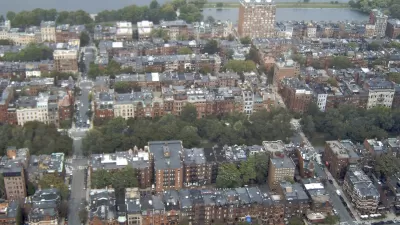The push for historic preservation districts often amounts to exclusionary zoning that exacerbates the housing affordability crisis.

Seattle's Mandatory Housing Affordability Program includes a provision that protects federally designated historic districts from zoning changes. Writing in The Urbanist, Mike Eliason argues that this protection amounts to a new form of restrictive covenant that will prevent denser development in many parts of the city and lead to an even bigger affordability crisis.
One such zone, Wallingford, is proposing a historic preservation district that would effectively freeze development in almost half of the Wallingford Urban Village Planning Area. The zone's proponents have also opposed more permissive accessory dwelling unit (ADU) regulations, reduced parking requirements, and affordable housing requirements.
Eliason contends that opposition to zoning changes that would increase density in a neighborhood central to transit and urban amenities hinders the city's efforts to make housing more affordable and meet climate goals. "From a historic standpoint, this is just another attempt by wealthy homeowners —who ironically are a minority of the Wallingford Urban Village—to keep those less well off out of their neighborhood." In the 1980s, local homeowners fought to have parts of the area downzoned to even further reduce opportunities for multi-family and student housing, despite the neighborhood's proximity to a university. Eliason admonishes readers to oppose the Wallington project and prevent historic preservation from becoming "yet another tool wielded by those living in exclusive enclaves to prevent rezoning for a more equitable, inclusive, and sustainable city."
FULL STORY: Are Historic Districts a New Variation to Restrictive Covenants?

Planetizen Federal Action Tracker
A weekly monitor of how Trump’s orders and actions are impacting planners and planning in America.

The Simple Legislative Tool Transforming Vacant Downtowns
In California, Michigan and Georgia, an easy win is bringing dollars — and delight — back to city centers.

San Francisco's School District Spent $105M To Build Affordable Housing for Teachers — And That's Just the Beginning
SFUSD joins a growing list of school districts using their land holdings to address housing affordability challenges faced by their own employees.

In More Metros Than You’d Think, Suburbs are Now More Expensive Than the City
If you're moving to the burbs to save on square footage, data shows you should think again.

The States Losing Rural Delivery Rooms at an Alarming Pace
In some states, as few as 9% of rural hospitals still deliver babies. As a result, rising pre-term births, no adequate pre-term care and "harrowing" close calls are a growing reality.

The Small South Asian Republic Going all in on EVs
Thanks to one simple policy change less than five years ago, 65% of new cars in this Himalayan country are now electric.
Urban Design for Planners 1: Software Tools
This six-course series explores essential urban design concepts using open source software and equips planners with the tools they need to participate fully in the urban design process.
Planning for Universal Design
Learn the tools for implementing Universal Design in planning regulations.
Smith Gee Studio
City of Charlotte
City of Camden Redevelopment Agency
City of Astoria
Transportation Research & Education Center (TREC) at Portland State University
US High Speed Rail Association
City of Camden Redevelopment Agency
Municipality of Princeton (NJ)





























